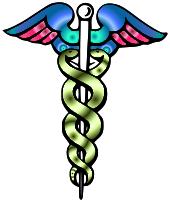 On December 9, 2013 the Center for Disease Control released a report entitled HIV Among Transgender People.
On December 9, 2013 the Center for Disease Control released a report entitled HIV Among Transgender People.
Two days ago Leela Ginelle, communications and development intern for TransActive Education and Advocacy wrote an Op-Ed at the Advocate: Why the CDC’s Latest HIV Report Is So Alarming.
The CDC report says an estimated 27% of transgender women are HIV positive, which is nearly 50 times as high as the rate for other adults. A New York City study found that more than 90% of newly diagnosed transwomen are African-American or Latina, and more than half are in their 20s.
Ginelle asks the question, “Why?”
The New York City study exposed the fact that 51% of newly diagnosed HIV+ transgender women had documented substance abuse, commercial sex work, homelessness, incarceration and/or sexual abuse, compared with only 31% of newly diagnosed HIV+ non-transgender women. Other “behaviors” listed in the report include attempted suicide, unemployment, lack of familial support, violence, stigma, discrimination, limited health care access, and negative health care encounters.
Transgender activist Dean Spade and others have outlined the cycle: a young trans woman is kicked out of her home by unaccepting parents, and because she is legally still male, she is barred from appropriate shelters and services. She therefore becomes homeless and the social stigma of being transgender prevents her from finding employment.
When trans women aren’t able to find jobs because of direct or indirect discrimination, they turn to street economies to feed themselves and to pay for the health care they need, and street work often places trans people at greater risk of contracting HIV and violence, especially for trans women of color who face racism, sexism and transphobia.
–Transgender Law Center attorney Sasha Buchert
Eventually this leads to incarceration, which makes it more difficult to find housing and employment and the cycle begins again.
Societal prejudice toward trans women is still widespread, affecting access to housing, education and employment. The report notes that trans women are more likely to live in transient housing than other populations, and to be less educated.
Other reports in the past have noted that transgender people tend to be more educated. My take away from this is that those who are more likely to become HIV+ are less educated.
HIV+ trans women are as likely to have health care coverage as other HIV+ people, but less likely to be on anti-retroviral therapy, which probably indicates a need for better education of health care providers.
Social service agencies could help by becoming more competent in working with transgender clients. Often, rather than enduring the stigmas they face at such places, trans women will simply forego the assistance, and miss the opportunity to check their HIV status or learn tools to reduce the likelihood of obtaining the virus.
–Buchert
Jaxon Mitchell, an HIV Prevention Specialist with the Cascade AIDS Project, says this is a structural problem.
Historically, HIV prevention and sexual/reproductive health services in general, have been organized by gender. For trans folks, gendered spaces almost always carry social and structural barriers. HIV prevention and testing services geared toward women frequently fall under the greater umbrella of reproductive health, which lacks the cultural competency to attend to the needs of trans women and carries many additional barriers.
–Mitchell
And then there is law enforcement compounding the problem by profiling young transgender women as sex workers and viewing possession of condoms by transgender women as evidence of criminal activity.
This use of condoms as per se evidence of illegal activity has already been struck down by the Supreme Court as a violation of privacy in Griswold v. Connecticut, which involved the use of condoms as evidence to prosecute for using contraception in 1960. [The practice] is likely a constitutional violation of privacy, and it is an unconscionable public health hazard to use condoms as the basis of evidence of illegal activity. The impact of prosecuting individuals based on possession of a condom can only have a chilling effect the use of protection, and will create a larger public health threat for everyone, and especially for transgender women.
–Buchert
The CDC details a “high-impact prevention approach” in an attempt to reverse the current trends. The approach involves providing support for community groups which distribute condoms, conduct HIV testing, and operate referral networks and services. The CDC also announced plans to update the National HIV Surveillance System so that transgender people are better identified within it (it has been the CDC’s pracrtice in the past to identify transwomen as MSM (Men who have Sex with Men).
For years, transgender women have been misclassified as MSM, or Men Who Have Sex With Men, which has created a situation where trans folks in general have not been counted.
Without broad research demonstrating what we all know empirically – that HIV infections among trans women, especially trans women of color, are unconscionably high – funding for programs designed to meet trans women’s unique needs will never be a priority.
–Mitchell
The CDC also says it will award grants to researchers developing new HIV prevention interventions like Project Life Skills and Girlfriends and any other group that will provide effective HIV prevention to “young transgender people of color and their partners” for more than five years.

1 comments
Author
…CDC derived the percentage.